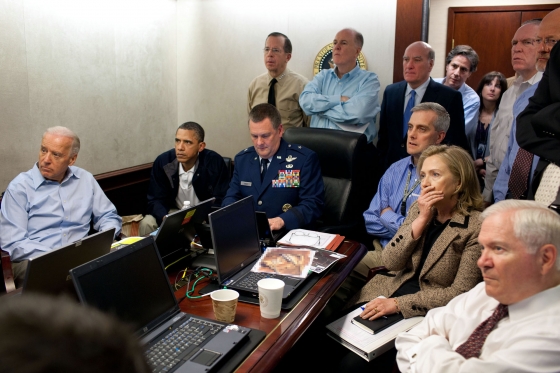
Abbottabad Revisited

The presentation to Pentagon officials last week of the Navy SEAL’s account of the Abbottabad raid has raised many questions as to how the operation was conducted and the moral implications of killing Osama Bin Laden. New controversy, however, has overshadowed the critical information gained last May from the 17 documents retrieved from the compound in Pakistan on the al-Qaeda organization and bin Laden’s last months as leader. Revisiting the correspondence provides insight into US progress against al-Qaeda in the year and a half since bin Laden’s death.
Three main themes emerge from the documents that were declassified and published this past May by the Combating Terrorism Center. While it’s up for debate which, if any, goals al-Qaeda has achieved since bin Laden’s death, the US has certainly made it the highest priority to thwart all efforts to increase the organization’s standing within the Muslim community.
First, despite bin Laden’s concerns, regional affiliates of al-Qaeda Central today possess greater autonomy than ever. Al-Qaeda in the Arabian Peninsula, and especially in Yemen, has grown stronger in the past year and a half, necessitating new defense policies, including a surge in US drone strikes.
Increased terrorist activity has also resulted in more Muslim civilian deaths, breaking further with leadership policy and continuing the negative publicity al-Qaeda faced in the wake of Muslim on Muslim attacks.
The credibility of al-Qaeda as a whole within the Islamic world was so low by the time of bin Laden’s death that he endeavored to rebrand the organization. Despite recent attempts to portray al-Qaeda as an instrument of the people, it remains unpopular with mainstream Muslims.
Second, bin Laden in multiple documents expressed hope for the future of al-Qaeda in the wake of the revolutions sweeping across North Africa and the Middle East in the beginning of 2011. He saw a role for his organization in guiding the revolutionaries to form Islamic states in the image of the first caliphate.
While his vision has been far from realized, Islamist political movements have gained ground throughout the region, partly due to trailblazing by al-Qaeda. The Salafist political party Gamaa Islamiya now holds 13 seats in the Egyptian parliament while al-Qaeda plays an understated but active role in the nearby Syrian uprising.
The US has done well in distinguishing between political and terrorist threats. However, it must be acknowledged that these revolutions, with support from al-Qaeda, have largely succeeded in distancing the Islamic world from the West.
Third, bin Laden sought to keep al-Qaeda focused on conducting attacks on the US homeland, despite the wishes of his aides. Failed attempts by the Times Square and Christmas Day bombers notwithstanding, the US to date has avoided another attack on the scale of 9/11.
A sophisticated counterterrorism strategy undoubtedly contributed to the security of the nation, but it is also possible that al-Qaeda experienced a policy shift after bin Laden’s death. As evidenced in the Abbottabad letters, many in bin Laden’s inner circle saw attacks on Americans already in the region to be more prudent than sending recruits to the US. Although likely to speed the US withdrawal from Afghanistan if effective, it has yet to be seen whether this approach will better further the long-term goals of the organization.
As new leaders struggle to keep al-Qaeda relevant in the lives of modern Muslims, the US is granted an opportunity to exploit both the fracture between al-Qaeda Central and its affiliates and the animosity in the Islamic world toward the organization. In this climate, the US should use the insights from the Abottabad documents and strive to make al-Qaeda as a whole as isolated and logistically retarded as bin Laden remained in his remote compound.






[…] Abbottabad Revisited […]